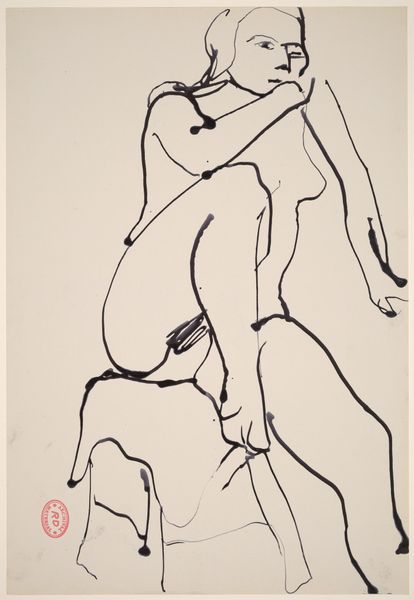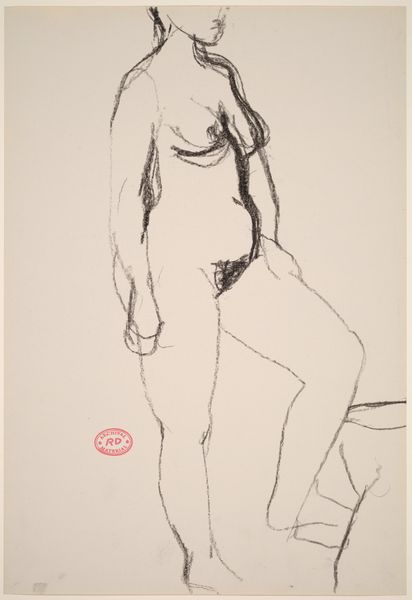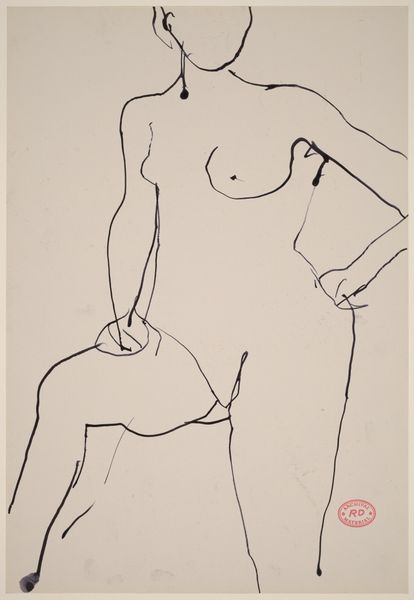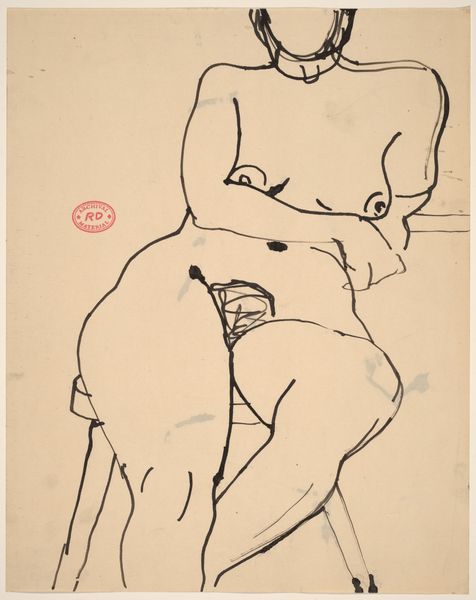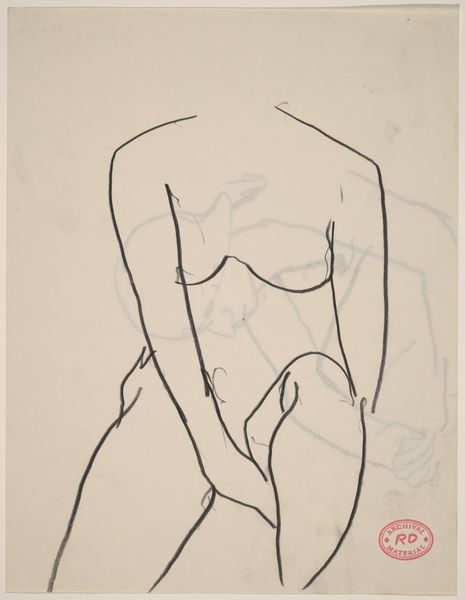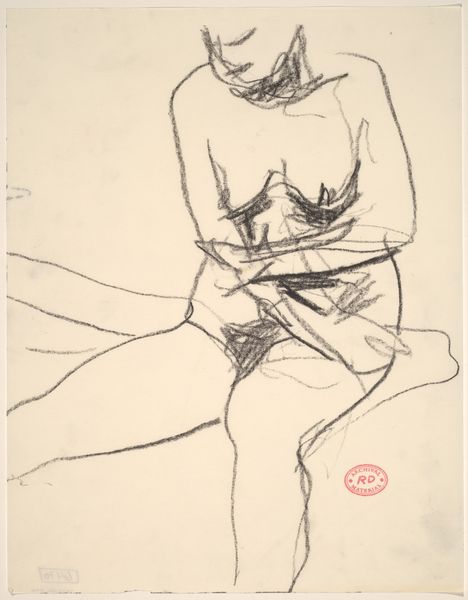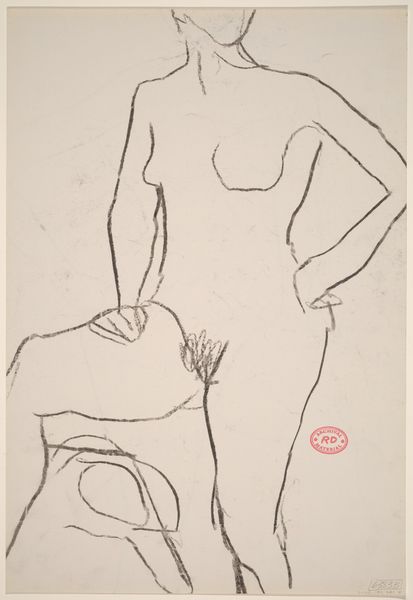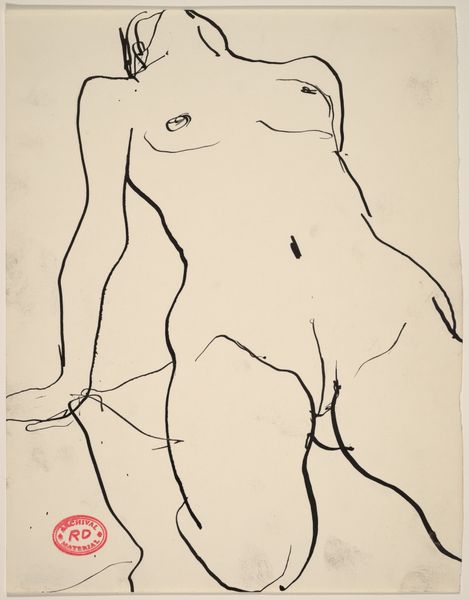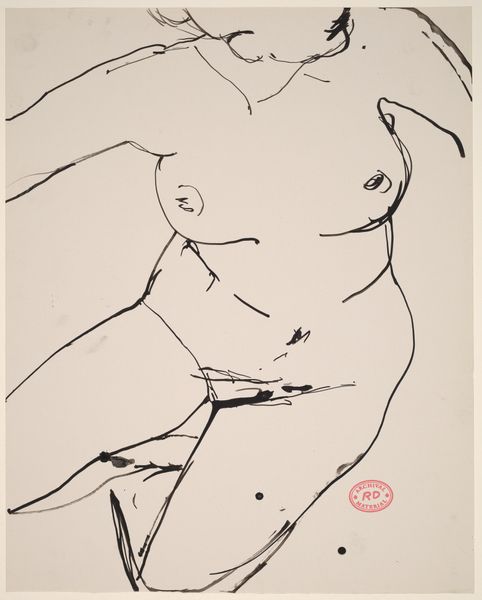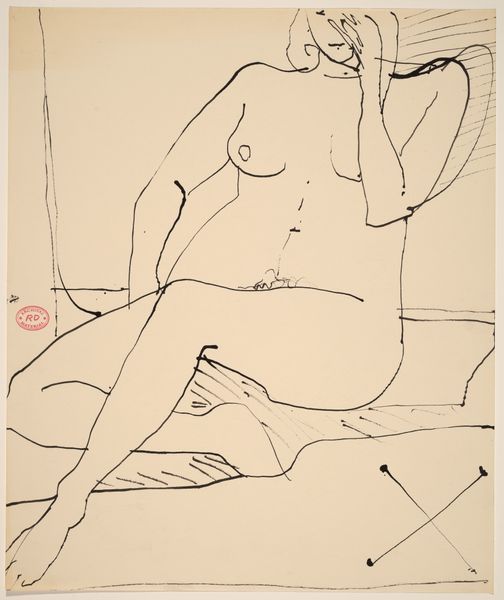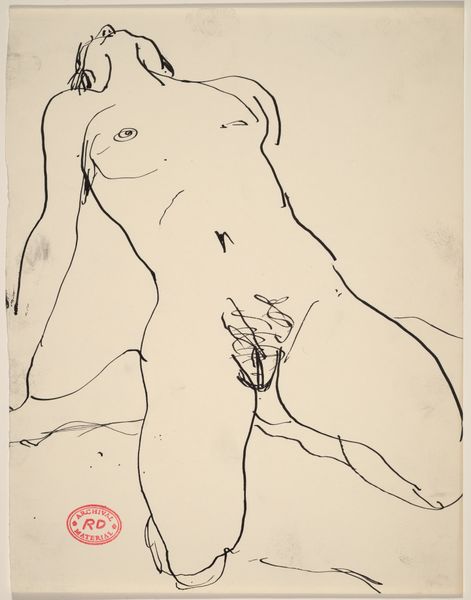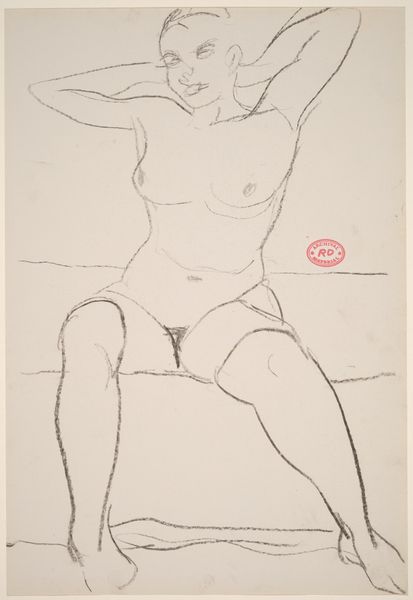![Untitled [seated female nude with legs apart] [recto] by Richard Diebenkorn](/_next/image?url=https%3A%2F%2Fd2w8kbdekdi1gv.cloudfront.net%2FeyJidWNrZXQiOiAiYXJ0ZXJhLWltYWdlcy1idWNrZXQiLCAia2V5IjogImFydHdvcmtzL2JiNmQyNzZiLWRkZDktNDcyMC05M2MxLTk1ZTk4NDMzOTYzOC9iYjZkMjc2Yi1kZGQ5LTQ3MjAtOTNjMS05NWU5ODQzMzk2MzhfZnVsbC5qcGciLCAiZWRpdHMiOiB7InJlc2l6ZSI6IHsid2lkdGgiOiAxOTIwLCAiaGVpZ2h0IjogMTkyMCwgImZpdCI6ICJpbnNpZGUifX19&w=3840&q=75)
Untitled [seated female nude with legs apart] [recto] 1955 - 1967
0:00
0:00
drawing, ink
#
portrait
#
drawing
#
ink drawing
#
pen sketch
#
pencil sketch
#
figuration
#
bay-area-figurative-movement
#
ink
#
nude
Dimensions: overall: 40.6 x 27.9 cm (16 x 11 in.)
Copyright: National Gallery of Art: CC0 1.0
Curator: The artwork before us, executed by Richard Diebenkorn sometime between 1955 and 1967, is an untitled ink drawing. It features a seated female nude. Editor: It's striking, isn't it? The bold ink lines are so economical yet so expressive. There is a remarkable simplicity in its form; it evokes a kind of raw immediacy. Curator: Absolutely. In examining the historical period, we find this drawing aligns with shifting societal norms, and challenges traditional expectations of the female form in art. We can discuss Diebenkorn's approach to the subject through a feminist lens, considering the agency or lack thereof granted to the model, and interpreting her gaze as indicative of the complex power dynamics inherent in the artist-model relationship. Editor: I see your point about societal shifts. However, what really grips me is the contrast. The stark black lines against the blank page creates such a dramatic, dynamic interplay. Observe how the pressure of the pen varies, creating thick, bold strokes that define the figure's contours, then softens to these fragile hairlines suggesting depth and shadow. This is masterly minimalism. Curator: Of course, those formal elements absolutely construct meaning. But beyond line and form, it's vital to analyze Diebenkorn’s decision to present this woman in a position of vulnerability – her legs are spread, gaze averted. How do race and class play into this representation of the female body, especially considering the social contexts in California during that era? Editor: Granted, the pose carries connotations, but focusing purely on composition, there's something inherently balanced. The positioning of the limbs creates geometric patterns. This underlying geometric rigor grounds what might otherwise be seen as a purely emotive gesture. It's structure reinforcing sensuality. Curator: Precisely. Recognizing how cultural narratives influence artistic expression enhances our understanding of not just Diebenkorn's artistic vision but also how broader sociopolitical climates shape how bodies, particularly women’s bodies, are depicted. It's about revealing layered power structures through art. Editor: Ultimately, I agree on its power; whether viewed as an interplay of visual forces or a socio-political statement, the artist compels us to confront what constitutes representation, and indeed beauty, within a constructed frame. It’s a lesson in looking closely, at how we see and how we're told to see.
Comments
No comments
Be the first to comment and join the conversation on the ultimate creative platform.
